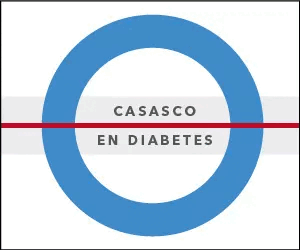Importance of women's health in Latin America (Argentina)
Keywords:
health, women, diabetesAbstract
In Argentina, the life expectancy of women is around 80 years. However, the main causes of death are cardiovascular diseases, which represent 31% of cases, followed by cancer (19%) and respiratory diseases (11%). Women in Argentina face high rates of chronic non-communicable diseases, such as diabetes, hypertension and breast cancer. The prevalence of diabetes in women is 13.7%, and risk factors such as a sedentary lifestyle and obesity are on the rise. 64% of women are sedentary and 33.4% are obese, which increases the risk of developing diabetes. Additionally, women with diabetes are 40% more likely to suffer from cardiovascular disease. 36% of Argentine women have high blood pressure, 32.4% have hypercholesterolemia and 18.6% smoke. In Mendoza, in 2018, 12.5% of women with type 1 diabetes were smokers. Furthermore, only 6.5% of women consume the recommended five daily servings of fruits and vegetables, with the daily average being 2.1 servings. Breast cancer is the most common type of cancer among women in Argentina, with an incidence of 74 cases per 100,000 women. Thanks to early detection programs, the 5-year survival rate is 85%, although coverage remains unequal. Regarding mental health, 20% of Argentine women experience some type of anxiety disorder and 25% suffer from depression at some point in their lives. Alcohol consumption among adolescent girls is concerning, with between 30% and 40% having consumed alcohol in the last month, and between 15% and 20% engaging in binge drinking. Marijuana consumption is 3% to 4% in adolescents and 12% to 15% in young women between 18 and 25 years old. There are significant differences in access to health services between women in urban and rural areas. 15% of rural women do not have regular access to health services, compared to 5% in urban areas. Additionally, 68% of women have some type of health coverage, while 32% depend exclusively on the public system. Gender inequalities also affect access to health care. Women face economic and social barriers that limit their ability to receive adequate care. Programs such as the National Plan for the Prevention of Unintentional Pregnancy in Adolescents and the National Program for Sexual Health and Responsible Procreation are important steps to improve women's health. Women in Argentina face significant health challenges, especially in relation to non-communicable diseases such as diabetes, cardiovascular diseases and breast cancer. Inequalities in access to healthcare are also a critical issue. It is essential to continue investing in health and education programs to improve the health of women in the country.
References
I. Ministerio de Salud de la Nación Argentina (2022). Informe Nacional sobre la Salud de las Mujeres.
II. 4º Encuentra Nacional de Factores de Riesgo. Dirección Nacional de Promoción de la Salud y Control de Enfermedades Crónicas no Transmisibles. Disponible en: https://www.indec.gob.ar/ftp/cuadros/publicaciones/enfr_2018_resultados_definitivos.pdf.
III. Gómez-Martin C, Pomares ML, et al. Level of physical activity and barriers to exercise in adults with type 2 diabetes. AIMS Public Health 2021;8(2):229-239.
IV. Cicchitti A, Bertona C, et al. Actividad física y control, complicaciones y factores de riesgo en diabetes tipo 1. Revista ALAD 2019;9:111-117.
Downloads
Published
How to Cite
Issue
Section
License
Copyright (c) 2024 on behalf of the authors. Reproduction rights: Argentine Society of Diabetes

This work is licensed under a Creative Commons Attribution-NonCommercial-NoDerivatives 4.0 International License.
Dirección Nacional de Derecho de Autor, Exp. N° 5.333.129. Instituto Nacional de la Propiedad Industrial, Marca «Revista de la Sociedad Argentina de Diabetes - Asociación Civil» N° de concesión 2.605.405 y N° de disposición 1.404/13.
La Revista de la SAD está licenciada bajo Licencia Creative Commons Atribución – No Comercial – Sin Obra Derivada 4.0 Internacional.
Por otra parte, la Revista SAD permite que los autores mantengan los derechos de autor sin restricciones.





































